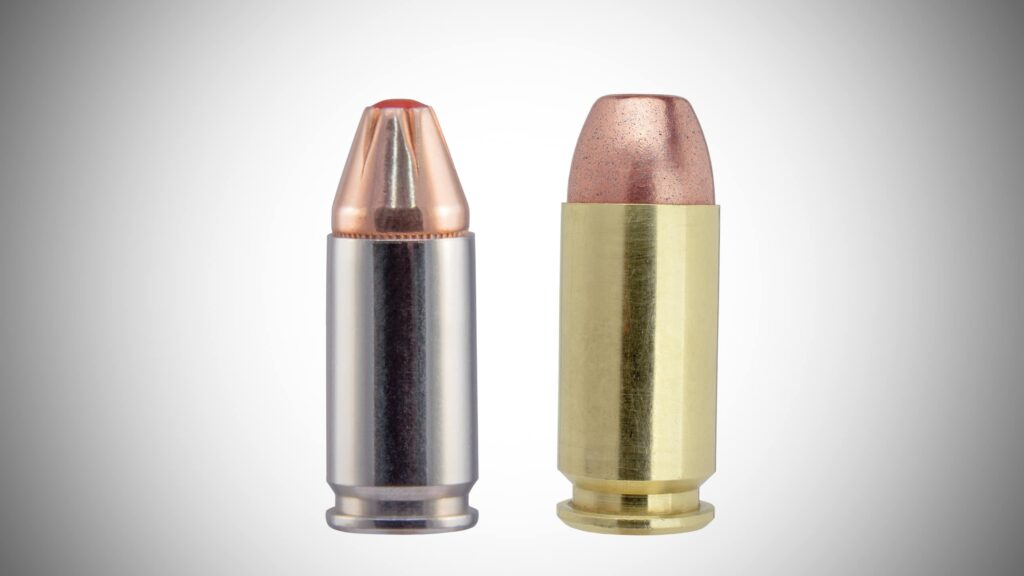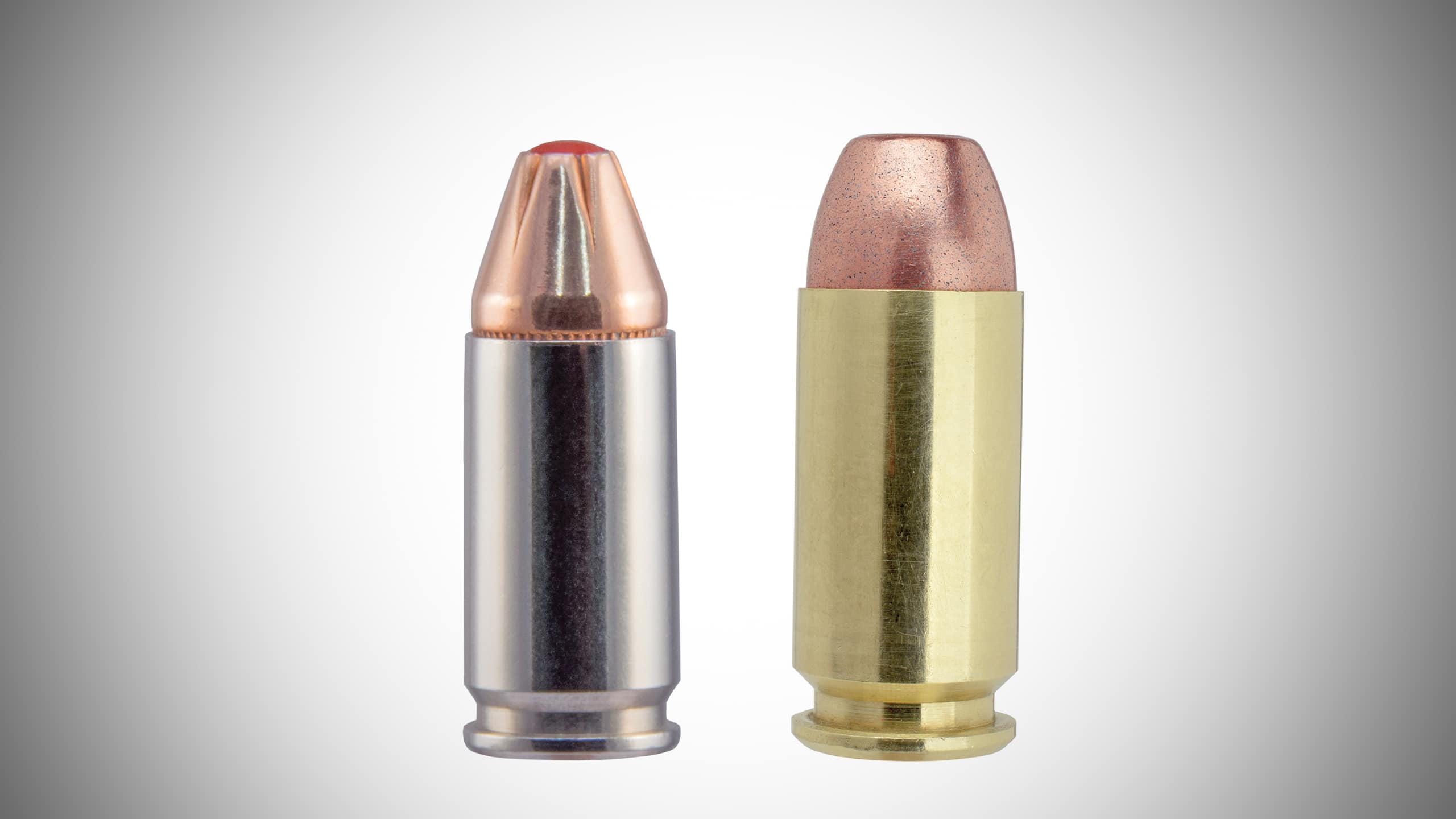
9mm vs .40: A Comprehensive Comparison for Choosing the Right Caliber
The debate between the 9mm and .40 caliber rounds has raged for decades among firearm enthusiasts, law enforcement agencies, and self-defense advocates. Both cartridges offer distinct advantages and disadvantages, making the decision of which to choose a complex one. This article aims to provide a comprehensive, objective comparison of the 9mm vs .40, covering various factors such as ballistics, recoil, capacity, cost, and suitability for different purposes. Understanding these nuances is crucial for making an informed decision that aligns with your individual needs and preferences. Many shooters find themselves torn between the two, often asking, “Which is better, the 9mm or the .40?” There’s no single answer; the best choice depends on the specific context.
A Brief History of the 9mm and .40 Calibers
The 9mm Luger, also known as the 9x19mm, was developed by Georg Luger in 1901 and quickly gained popularity due to its compact size, manageable recoil, and relatively high capacity. It became the standard service pistol cartridge for many military and law enforcement organizations worldwide. The 9mm’s widespread adoption has led to its continued development and refinement, making it a highly effective and versatile round.
The .40 Smith & Wesson, on the other hand, is a more recent development. Introduced in 1990, it was designed to bridge the gap between the 9mm and the .45 ACP. The .40 S&W was initially created in response to the FBI’s desire for a cartridge with more stopping power than the 9mm but with less recoil than the .45 ACP. It quickly gained popularity among law enforcement agencies seeking a compromise between capacity and terminal performance.
Ballistic Performance: 9mm vs .40
When comparing the 9mm vs .40 in terms of ballistics, several factors come into play, including velocity, energy, and trajectory. Generally, the .40 S&W offers slightly more energy and a larger bullet diameter than the 9mm. This can translate to potentially greater stopping power, although this is a complex and debated topic. However, advancements in 9mm bullet technology have narrowed the performance gap in recent years.
Velocity and Energy
Typically, a 9mm round with a 115-grain bullet can achieve a muzzle velocity of around 1,150 feet per second (fps) and a muzzle energy of approximately 340 foot-pounds (ft-lbs). A .40 S&W round with a 180-grain bullet, on the other hand, can reach a muzzle velocity of around 985 fps and a muzzle energy of about 390 ft-lbs. While the 9mm is faster, the .40 delivers more energy due to its heavier bullet.
Trajectory
The trajectory of both rounds is relatively flat out to typical handgun engagement distances (25 yards or less). However, the 9mm’s higher velocity can result in a slightly flatter trajectory over longer distances. This difference is often negligible in practical self-defense scenarios.
Penetration
Both the 9mm and .40 S&W are capable of adequate penetration for self-defense purposes. Modern hollow-point bullets in both calibers are designed to expand upon impact, transferring energy to the target and creating a larger wound cavity. The FBI’s testing protocols have shown that both calibers, when loaded with quality ammunition, can meet their penetration requirements.
Recoil Comparison: 9mm vs .40
Recoil is a significant factor to consider, especially for new shooters or those sensitive to it. The .40 S&W generally produces more felt recoil than the 9mm. This can impact accuracy, especially during rapid firing, and can be a deterrent for some shooters. Controlling recoil is crucial for maintaining accuracy and follow-up shot speed.
Recoil Management
While the .40 S&W has more recoil, experienced shooters can learn to manage it effectively. Proper grip, stance, and shooting technique can mitigate the effects of recoil. However, for those with smaller hands or less upper body strength, the 9mm may be a more comfortable and manageable option.
Capacity and Firearm Size: 9mm vs .40
In general, firearms chambered in 9mm can hold more rounds in the magazine compared to those chambered in .40 S&W. This is due to the smaller diameter of the 9mm cartridge. Higher capacity can be an advantage in self-defense situations where multiple threats are present. Additionally, 9mm pistols often have a slimmer profile, making them easier to conceal.
Magazine Capacity
A typical compact 9mm pistol might hold 10-15 rounds, while a similar-sized .40 S&W pistol might hold 8-12 rounds. This difference in capacity can be a deciding factor for some shooters, especially those who prioritize having more rounds available.
Concealability
The slimmer profile of many 9mm pistols can make them easier to conceal carry, especially for individuals with smaller frames. A smaller grip also contributes to better concealability. [See also: Best Concealed Carry Pistols] This can be a significant advantage for those who prioritize discreet carry.
Cost and Availability: 9mm vs .40
The 9mm is generally less expensive than the .40 S&W. This is due to its widespread popularity and higher production volume. Ammunition cost is an important consideration, especially for those who practice frequently. The lower cost of 9mm ammunition allows for more range time and improved proficiency.
Ammunition Cost
On average, a box of 9mm ammunition will cost less than a box of .40 S&W ammunition. This price difference can add up over time, especially for frequent shooters. The cost savings associated with 9mm can make it a more budget-friendly option.
Availability
The 9mm is one of the most popular and widely available handgun cartridges in the world. It can be found at virtually any gun store or online retailer. The .40 S&W is also readily available, but its selection may be slightly more limited compared to the 9mm.
Stopping Power: The Ongoing Debate
The concept of “stopping power” is complex and often debated. While the .40 S&W delivers more energy than the 9mm, the effectiveness of a handgun cartridge in stopping a threat depends on several factors, including shot placement, bullet design, and the physiology of the target. Modern hollow-point bullets in both calibers are designed to expand upon impact, creating a larger wound cavity and transferring energy to the target. [See also: Handgun Stopping Power Explained] Many experts argue that shot placement is the most critical factor, regardless of caliber.
Shot Placement
Accurate shot placement is paramount. A well-placed shot with a 9mm can be more effective than a poorly placed shot with a .40 S&W. Practicing regularly and developing good shooting skills is essential for effective self-defense.
Bullet Technology
Advancements in bullet technology have significantly improved the performance of both the 9mm and .40 S&W. Modern hollow-point bullets are designed to expand reliably and penetrate adequately, maximizing their effectiveness. Choosing quality ammunition is crucial for ensuring optimal performance.
Applications: Which Caliber is Right for You?
The best caliber for you depends on your individual needs, preferences, and shooting experience. Consider the following factors when making your decision:
- Self-Defense: Both the 9mm and .40 S&W are viable options for self-defense. The 9mm offers higher capacity and less recoil, while the .40 S&W delivers more energy.
- Concealed Carry: The 9mm is often preferred for concealed carry due to its slimmer profile and lighter weight.
- Law Enforcement: Many law enforcement agencies have transitioned back to the 9mm due to its improved bullet technology and higher capacity.
- Competition Shooting: The 9mm is a popular choice for competition shooting due to its lower recoil and faster follow-up shots.
- Home Defense: Both calibers can be effective for home defense. Consider factors such as over-penetration and the presence of other household members.
Conclusion: Choosing Between the 9mm and .40
The 9mm vs .40 debate is unlikely to be resolved anytime soon. Both calibers have their strengths and weaknesses. The 9mm offers higher capacity, less recoil, and lower cost, making it a popular choice for a wide range of applications. The .40 S&W delivers more energy and a larger bullet diameter, potentially offering greater stopping power. Ultimately, the best caliber for you is the one that you can shoot accurately and comfortably. Consider renting or borrowing firearms in both calibers to see which one feels best in your hand and performs best for you. Practice regularly with your chosen caliber to develop proficiency and confidence. Remember, responsible gun ownership includes proper training and adherence to all applicable laws and regulations. Choosing between the 9mm and the .40 involves careful consideration of your individual needs and circumstances. This comparison of 9mm vs .40 should help you make an informed decision.

